|
The phenomenon of a multicultural and multinational Lodz has been a point of interest and fascination for many decades. This issue has become of particular interest nowadays, when the city and its inhabitants return to their identity, established in the nineteenth and early twentieth century. How was it possible that a small village, inhabited in 1820 by 767 people, turned into one of the most powerful and rapidly growing industrial centers of Eastern Europe, where nearly 100 years later, shortly before the outbreak of World War I, 600 000 people lived and worked? The largest national group of Lodz were Poles, amounting in 1914 to nearly 300 thousand people (50% of the general public). The next group in terms of numbers were Jews, constituting about 30% of the population. They were followed by Germans, with a population of up to 70,000before the outbreak of World War I. The least numerous were Russians, with about 6.5 thousand people living in Lodz at the time. The period of the most rapid growth in the number of inhabitants of Lodz falls at the end of the nineteenth and first decade of the twentieth century. In 1870, the population was about 50,000, in 1901 it reached 300,000, and in 1914 almost 600 thousand people lived in the city. Such a rapid development of the city’s population was associated primarily with migration. For all nations coming to Lodz, the city became the proverbial “promised land”, where they had the opportunity to improve their current living conditions. The city offered the possibility of rapid changes in social status for the most active and enterprising individuals, it was, however, difficult and required a titanic effort, and sometimes also luck. Conditions created for new settlers coming to Lodz, in combination with the natural environment in the region as well as the opening of a huge market in the Russian Empire became an ideal base for further development of the city. Just how extremely attractive these conditions were may be evidenced by the fact that emigrants came from such distant places as Rhineland and Styria. The coexistence of Lodz citizens, so diverse in terms of tradition, religion and customs, had to involve manifestations of both rivalry and antagonism, as well as neighborly assistance or cooperation. The problems between the nations arouse from the political situation (Poles versus Russians), mistrust towards people of different religious background (the attitude of Christians towards Jews) or socio-economic disparities (such as between Poles and Germans). However, as open conflict based on nationalistic sentiments was practically impossible. The system of links between business and property relations was so complicated that an attack on one of the national groups brought inevitable repercussions to the others. This cultural melting pot in Lodz created a unique atmosphere of local patriotism and bound the thus far foreign nations into a single urban community. The relationship Lodz citizens of all nationalities with their city, regardless of their national background, is evidenced by their artistic output, such as memoirs, poetry or music, but also by the joint declarations of members of the City Council at the time of reconstruction of the Polish state. Living side by side had to affect every aspect of city development, including the language which its citizens spoke. Journalists from as early as the early twentieth century noticed a considerable influence of German on the Polish language in Lodz, including not only professional terminology but also everyday speech. The German language was widely understood and spoken quite fluently not only by the bourgeois elites but also by Polish workers and foremen. In the streets, you could hear a mosaic of languages: Polish, Yiddish, German and Russian. The functioning of a large, rapidly developing city boosted cooperation among its residents. Roles in this collaboration evolved throughout the nineteenth century but the main division can be described as follows. 70% of Germans were active in the fields of trade and industry; Russians, as a result ofthe political situation, were mostly employed in the public administration and the army; Poles, arriving en masse from the surrounding towns and villages, mainly provided the manpower of Łódź; Jews were primarily associated with trade, finance and factories. Despite these social and professional differences, life and work in the city provided an opportunity for more profound relations to be made, and thus for the people to become accustomed to "aliens" who gradually ceased to be so. Such an opportunity was the everyday life: shopping in a shop or a market, conducting business and establishing trade contacts, visiting government offices and banks, religious ceremonies, and eventually also theater, cinema and sporting events. Residents of the late nineteenth and early twentieth century were integrated by different types of festivals, circus performances and dancing. All that allowed the Lodz citizens to get to know each other and to learn to live together. The industrial and demographic development of Lodz had to entail its urban expansion. The multicultural character of the city left its mark also on this aspect. Investors were mostly representatives of groups dominant in the economic life, mainly Germans and Jews. Particularly important was the development of architecture in Lodz in the 1890s, when the low and monotonous architectural skyline of the city turned into a large modern construction site, with a variety of architectural forms. The design of Lodz buildings was modeled primarily after Berlin and Vienna architecture. This resulted in a rich variety of the city's architecture, whose creators, architects and artists were the citizens of Polish Lodz, German or Jewish origin. Buildings which were created at the turn of the century, despite the ravages of World War II and the period of Polish People's Republic, represent the uniqueness of Lodz until today. The most fascinating and exotic aspect of the life in Lodz was the religious coexistence. In Lodz, until 1939, one could see Catholics praying in their churches, Protestants singing psalms, Orthodox believers in their churches and pious Jews in their synagogues and prayer houses. Rituals associated with holidays such as Christmas or Easter on the one hand and Pesach or Yom Kippur on the other, mingled in the streets of the robust city. Daily observations of different cultures, faiths and religions had to reduce distrust over time. The tangible trace of the presence of all these cultures, and especially individual people who created them are still the cemeteries of Lodz. This includes the great necropolis at Ogrodowa Street, where Catholic, Protestant and Orthodox builders of Lodz are laid to final rest together. The size and significance of the Jewish minority is evidenced by the beautiful and unique New Cemetery at Bracka Street. The multicultural and multinational city of Lodz, built by Poles, Germans, Jews and Russians alike, existed and flourished until the outbreak of World War II and its traces are visible in the city until today. |
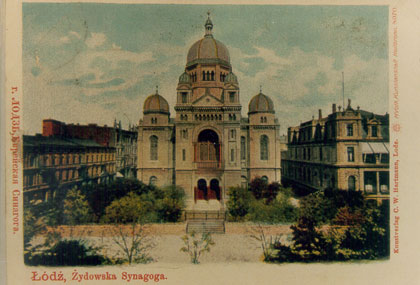 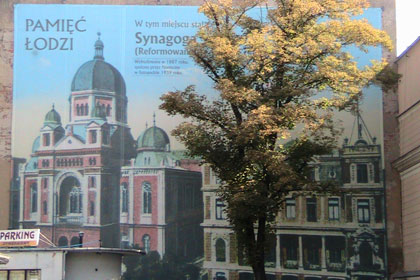 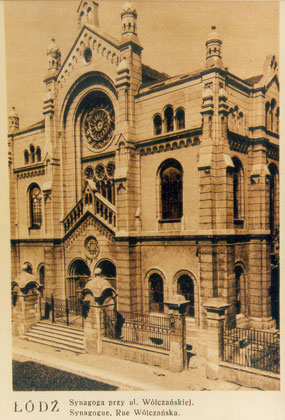 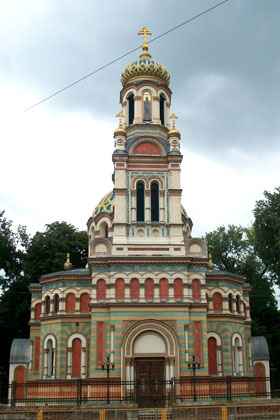 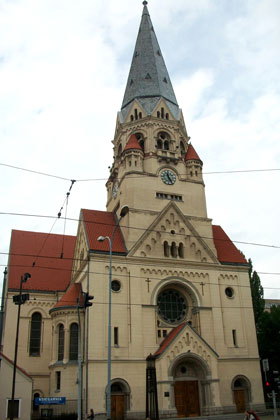 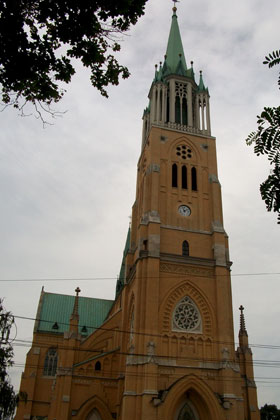 |
